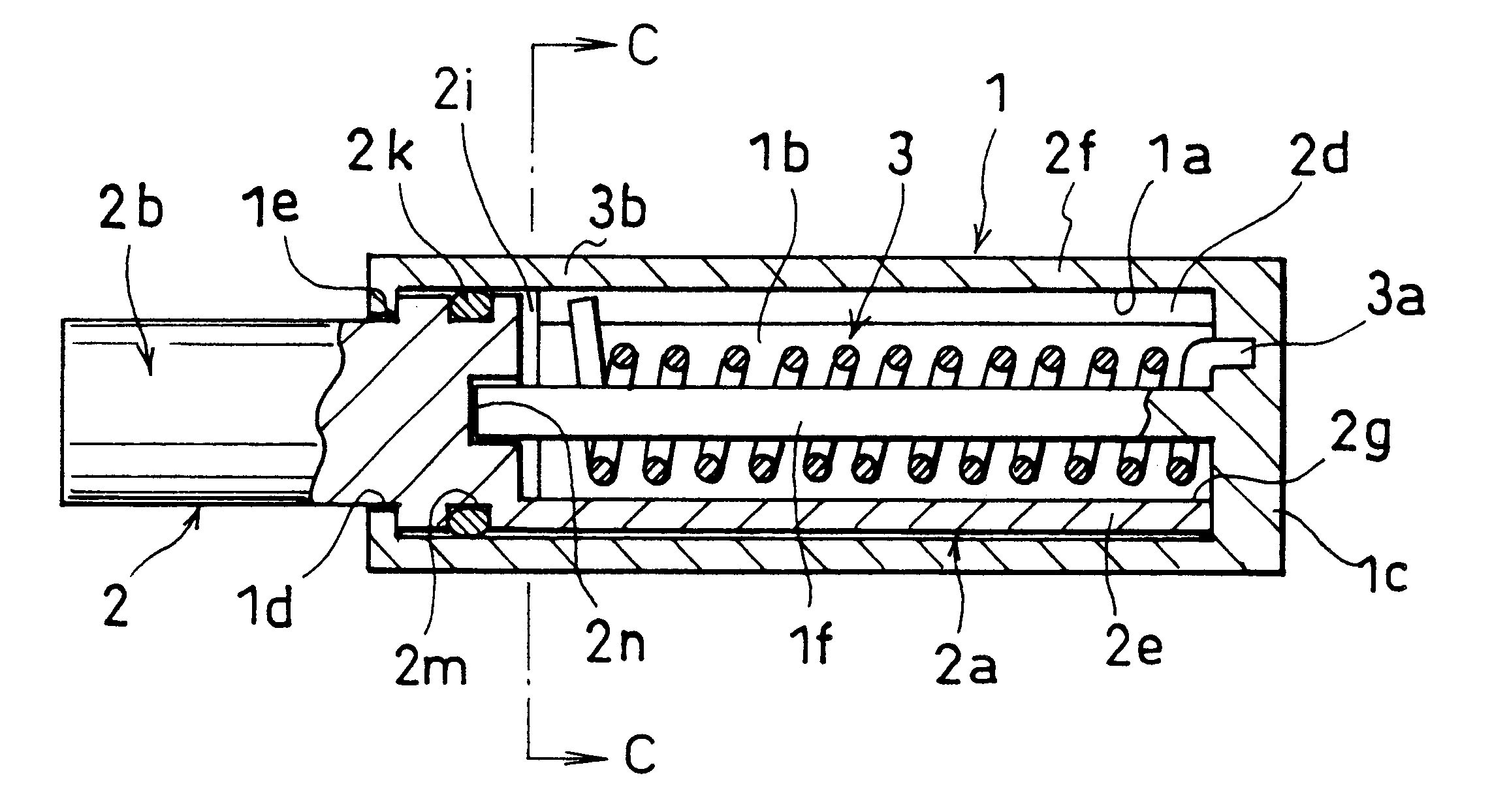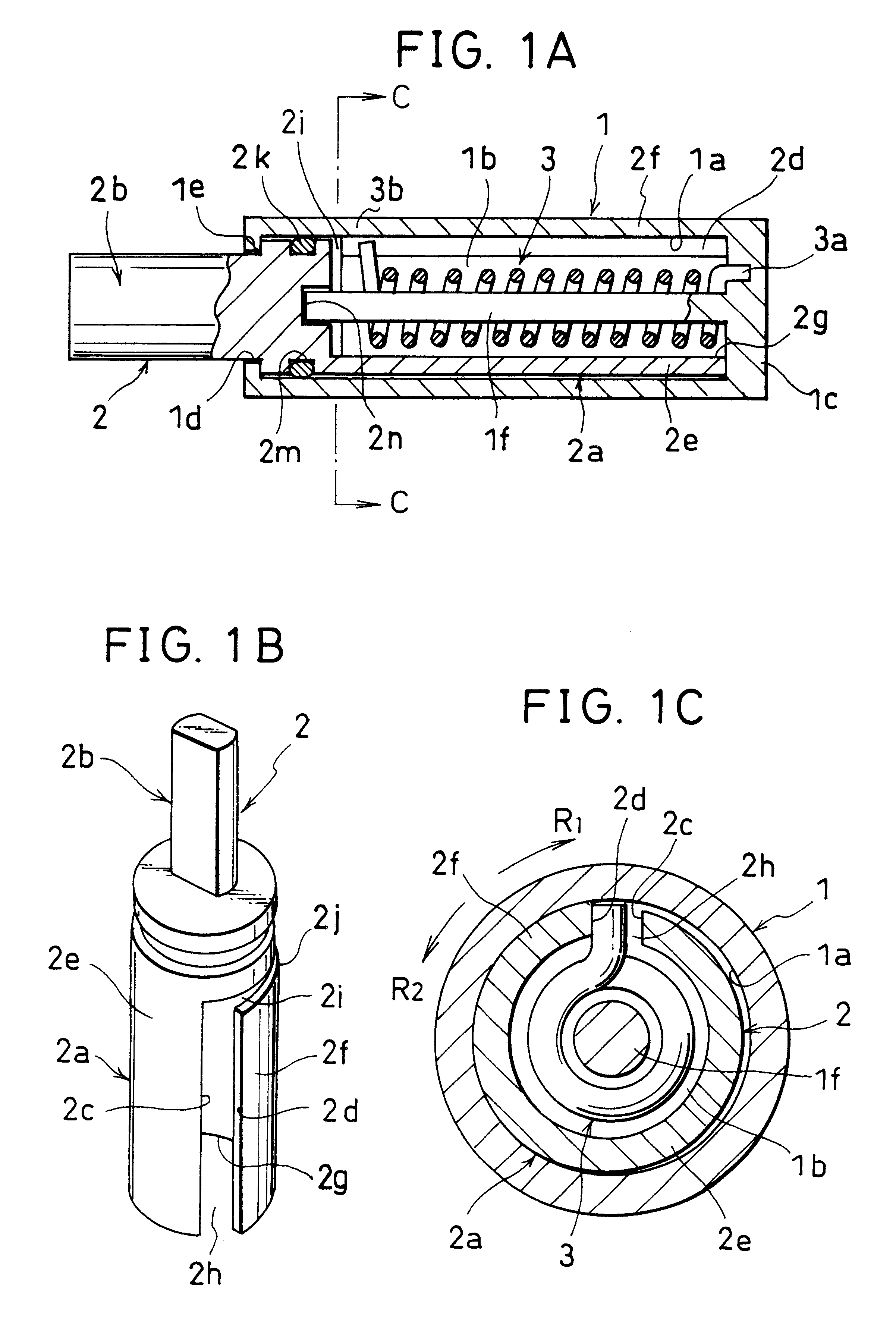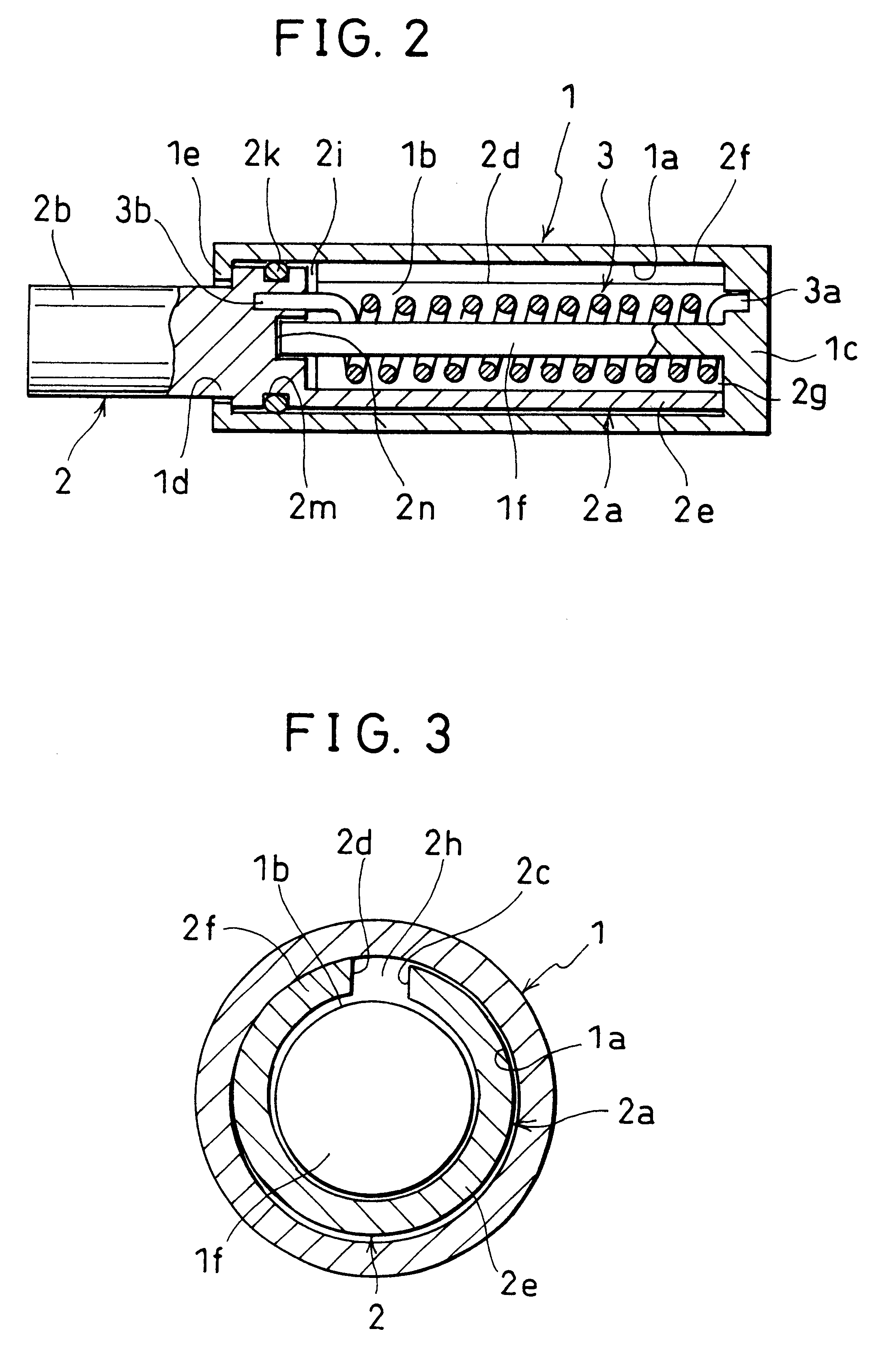Rotary damper
a technology of rotary dampers and dampers, which is applied in the direction of shock absorbers, wing accessories, manufacturing tools, etc., can solve the problems of high machining precision, large number of viscous fluid m, and inability to provide sufficient and satisfactory, so as to achieve the effect of reliably providing the damper
- Summary
- Abstract
- Description
- Claims
- Application Information
AI Technical Summary
Benefits of technology
Problems solved by technology
Method used
Image
Examples
Embodiment Construction
Now, the present invention will be described by referring to the accompanying drawings that illustrate preferred embodiments of the invention.
FIGS. 1A through 1C schematically illustrate an embodiment of a rotary damper according to the invention comprising a casing 1 and a movable shaft 2. The casing 1 is rigidly secured to a predetermined position and the movable shaft 2 is linked to a door, a toilet lid or the like. However, it may be so arranged that inversely the movable shaft 2 is rigidly secured to a predetermined position and the casing 1 is made to be movable with a door or the like.
Said casing has in it a cavity 1b defined by the inner peripheral surface 1a of the casing and dosed at an end thereof by a closure section 1c but open at the other end to provide an opening 1d there.
On the other hand, the movable shaft 2 has a cylindrical shaft section 2a loosely and rotatably contained in the cavity 1b of the casing 1 but unreleasably held in the cavity 1b by an anti-release e...
PUM
 Login to View More
Login to View More Abstract
Description
Claims
Application Information
 Login to View More
Login to View More - R&D
- Intellectual Property
- Life Sciences
- Materials
- Tech Scout
- Unparalleled Data Quality
- Higher Quality Content
- 60% Fewer Hallucinations
Browse by: Latest US Patents, China's latest patents, Technical Efficacy Thesaurus, Application Domain, Technology Topic, Popular Technical Reports.
© 2025 PatSnap. All rights reserved.Legal|Privacy policy|Modern Slavery Act Transparency Statement|Sitemap|About US| Contact US: help@patsnap.com



